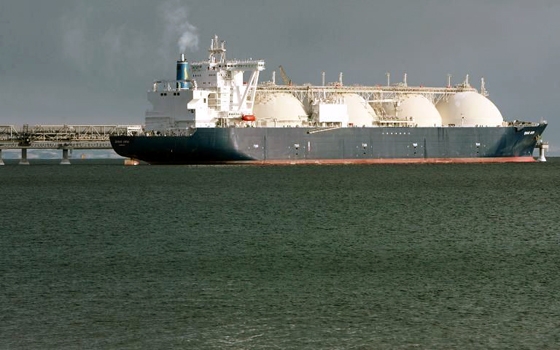Jordan’s high energy import bills and the frequent power cuts resulting from shortfalls in supplies from Egypt may soon become less of a problem as a new liquefied natural gas (LNG) import facility at the port of Aqaba is set to come on-line by the end of the year.
Work on the $65m terminal to the south of Aqaba is on schedule, according to Energy Ministry officials, with a floating regasification plant to process the LNG already rented. Construction finance is being provided by the Kuwait Fund for Arab Economic Development.
Developing alternatives
While work is proceeding on the terminal itself, Jordan has moved to lock in supplies for the new facility. In early May, Energy Minister Mohammad Hamed confirmed that an agreement had been reached with Royal Dutch Shell to supply LNG, with contracts to be signed before the end of the second quarter. Under the agreement, Shell will supply 16.7m cu metres of LNG per day for processing and distribution through the terminal. First shipments of gas are expected by the end of the year.
The LNG terminal is one of the most immediate responses to a disruption of gas supplies from neighbouring Egypt, with the pipeline linking the two being subject to a series of bombings that cut gas flow in recent years. Egypt is struggling to meet its export commitments in the face of high domestic demand and falls in production, having to redirect gas from overseas sales to the local market. One of the hardest hit from this move has been Jordan, which has relied on Egyptian gas for up to 80% of its gas requirements, with most of the gas used to fire power stations.
The need to develop alternative energy supplies will become more pressing in the years to come, as the current losses by the National Electric Power Company (NEPCO) continue to press on the budget, mainly a result of having to buy and import fuel from the open market at a time when prices were high. According to Finance Minister Umayya Toukan, the company lost around $4.9bn last year, and a total debt of $7bn was accumulated over the past three years, Jordan imports up to 97% of its energy needs, with outlays estimated to be the equivalent of more than 20% of gross domestic product.
According to Shell officials, importing LNG through the Aqaba facility will cut Jordan’s energy bill by around $500m a year. Though LNG is more expensive than natural gas, the cost is far below that of diesel, with the Aqaba terminal providing the added advantage of reliability, something that Egypt can no longer offer as a supplier.
Secure energy link to boost economy
Ratings agency Standard and Poor’s (S&P’s) issued its latest investor note on Jordan in May and maintained its ‘BB-/B’ long- and short-term foreign and local currency sovereign credit ratings while keeping in place its negative outlook for the medium term. Jordan had taken a large hit from the losses incurred by NEPCO stemming from the disruptions to the gas supply from Egypt and the resulting need to ramp up diesel imports to offset gas shortages, the note added.
Several developments in the energy sector would begin to reduce the fiscal and external costs of energy supplies, S&P added, with one of the key measures being the diversification of energy sources and the construction of the LNG terminal at the port of Aqaba.
With the government planning to eliminate electricity subsidies by 2017, it will want to try to keep the price shock to a minimum by having a cost-effective source of power in place by that time. This will help minimise the flow of pricing increases to the public and lessen their impact on the economy.
However, even with the new Aqaba facility and other programmes to diversify Jordan’s energy sourcing, the country may struggle to keep up with the demand for power, driven by a demographic boom and the influx of hundreds of thousands of Syrian refugees. According to Energy Ministry estimates, electricity requirements are set to double from the present level of 2000 MW to 4000 MW by 2020.
The country needs the private sector to invest in its oil shale, natural gas and renewable energy sectors to meet a forecast 7% annual increase in electricity demand, Energy Minister Hamed added.
Oxford Business Group
4 July






















































